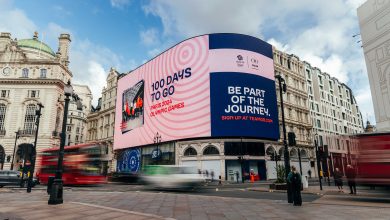Nir Wegrzyn: using metaphor is the key to engaging the irrational consumer – or why Apple knows best


A recent report from Intebrand showed us that Coca Cola, after thirteen years’ reign as the world’s “Most Valuable Brand”, has been replaced by a new contender – Apple.
At BrandOpus, Apple’s rocketing value since 2011 (from $33bn to more than $98bn) has left us asking the question: what does Apple have to thank for its success? Its products, or its brand?
My answer is: aesthetically and functionally brilliant though Apple’s products are, brand has played a critical role in its success story, raising the tech giant to heights it would not otherwise have reached.
The role of metaphor
Apple’s brand identity and namesake – the Apple with the bite taken out of it – uses an incredibly powerful metaphor which, whether we are aware of it or not, has consistently shaped our perception of the brand.
The apple with the bite taken out of it resonates in our collective consciousness as a biblical metaphor for Eve’s apple – the only apple that has definitely been bitten (others have argued it may be Newton’s apple, but his was never bitten…)


These references have shone through in Apple’s marketing: see its 1984 advert – a direct reference to the new woman rebelling against the authoritarian patriarchy of Big Brother in George Orwell’s novel (below).
Many successful brands have used metaphors to give their brands meaning: Microsoft used a window; Dove chose a universal symbol for peace and serenity; Jaguar a fierce, agile cat; Bentley a majestic eagle.
Why using metaphor works
In a Nobel Prize-winning paper in 2002, professor emeritus of psychology and public affairs Daniel Kahneman claimed consumer decision-making is mostly irrational.
The majority of decisions are made on autopilot, he suggested – often through habit. Kahneman named our internal decision-making system as ‘System 1’ – characterised, in fact, by a lack of thinking. Rational thinking, on the other hand, Kahneman classified as ‘System 2’ – used rarely, and only in certain bigger, more complex decisions.
He was not the first to raise the idea, but his paper conveyed it logically and simply, making it accessible to the general public for the first time. An ensuing book, Thinking Fast and Slow, based on the principles of his Nobel Prize-winning paper, further grew public awareness and instigated open discussion of the notion.
When does it matter most?
Tapping into the consumer’s System 2, the unconscious and deeper process, is far more important in branding than it is in advertising. Essentially, the consumer’s reaction to an ad is cognitive: the consumer is aware of the advert; it is registered; an opinion is formed.
The best and especially the most controversial ads are even discussed openly among contemporaries – opinions may not be rational, but they are cognitive.
The spaces in which the consumer is most influenced by metaphor and symbolic meaning are those in which the consumer operates unaware.
For example, the consumer does not realise a subtle change to the brand identity influences the way they make choices. They’d be insulted if you suggested it, in fact.
For this reason, it’s often best not to ask the consumer what works and what doesn’t in branding. They simply don’t know.
Consumers are irrational
Consumers suffer from a variety of ‘cognitive biases’: patterns of deviation in judgment, which lead to perceptual distortion and illogical interpretation of their own motivations – what is more commonly known as irrationality.
Individuals embed brands into their own subjective social reality, using them to shift the way they view themselves and others’ opinions of them too. Consumers’ objective ‘opinions’ about brands are not indicative of how they use them to shift their perceived social status.
How to get it right
Stop asking the consumer
Kahneman’s thinking tells us the results collected from consumers when appealing to their explicit, or conscious, memory will not reflect actual behaviour – in fact, it may be misleading. The pack that worked well in research can easily fail on the shelf.
FMCG marketers in particular, when looking for new ways of influencing behaviour, should stop asking for consumer opinions about what works. The data collected is not helpful.
This does not mean we shouldn’t ask consumers to help at all – but we do need to develop ways of understanding what is going on which do not involve asking their opinion.
Think about framing and metaphors
The context in which a brand is presented influences how it is perceived, so immediate graphics have a profound effect on product perception.
Brand identity or logo plays a crucial role, acting as a ‘framing device’ – instantly contextualising brand content, and significantly affecting the irrational decision-making process.
It can carry meaning independent of everything else about the brand (copy, marketing, advertising) – carrying unique potential as a vehicle to transport values and create instant meaning.
Metaphorical brands behave as the fastest type of conduit for meaning, if done well enough.
It may sound radical, but when consumers see a new brand identity and it carries a well-executed metaphor, they will assume it was always there, and will instantly but subliminally associate a new set of values with the brand.


Forcing a consumer to acknowledge or observe a logo, however, is the wrong approach: London 2012, for instance, whose logo had its own launch party (!), was the subject of much ridicule. This would probably not have been the case had the organisers not pushed it so hard.
Implicit techniques and semiotic analysis need to be integrated, and the influence of brand identities explored from a new angle, if we are to carry our mission forward and improve brand integration with customers.









